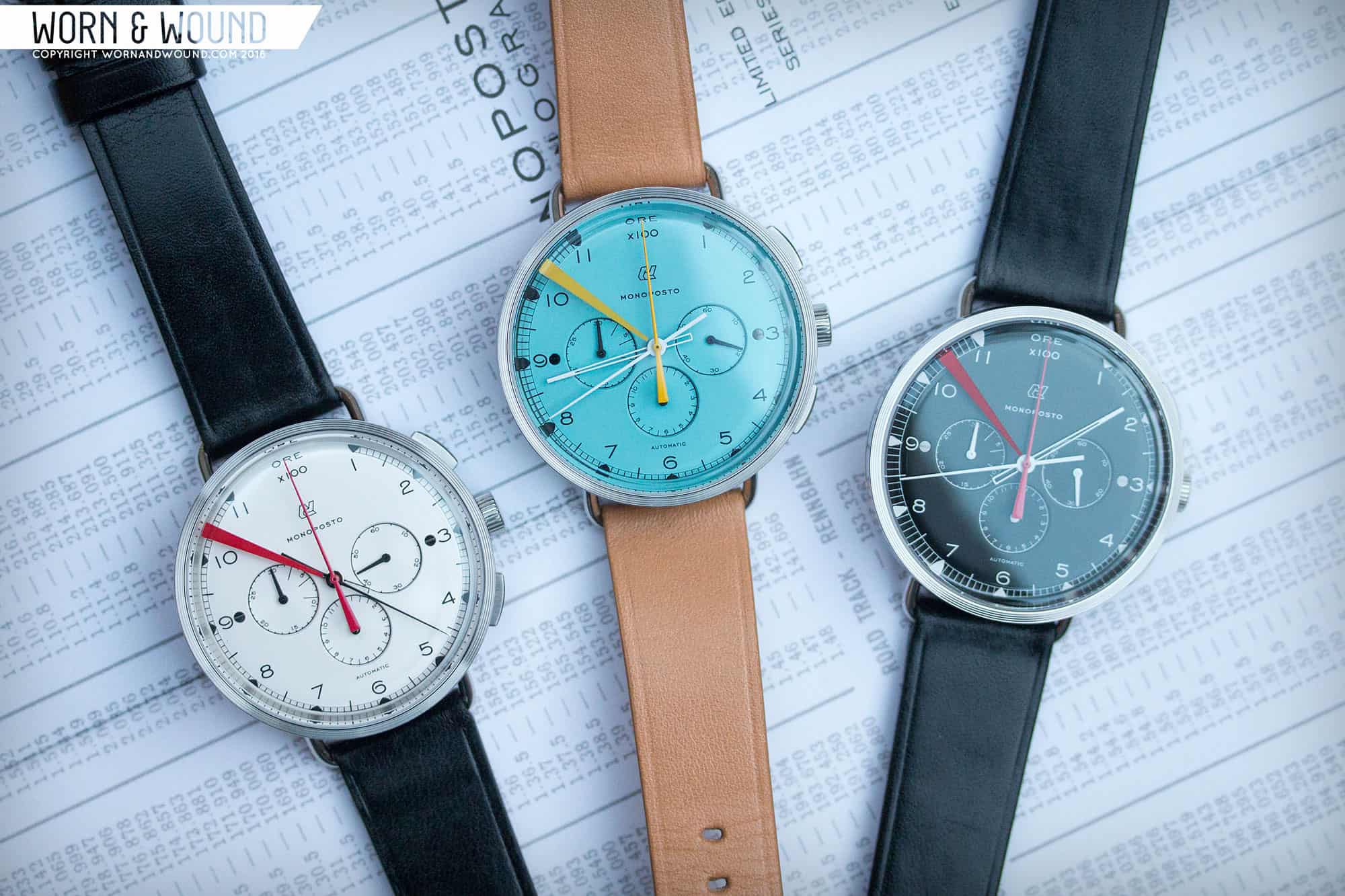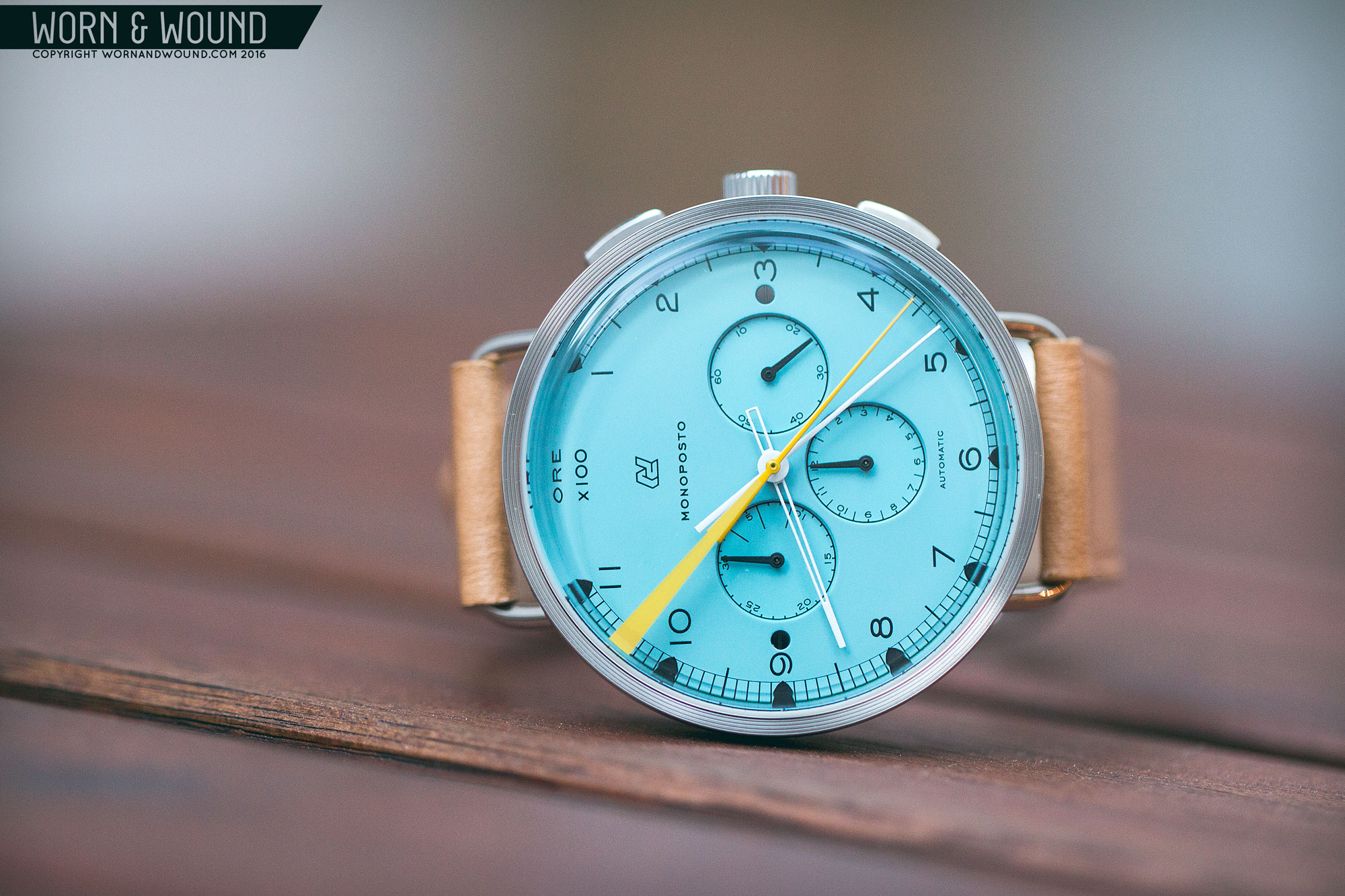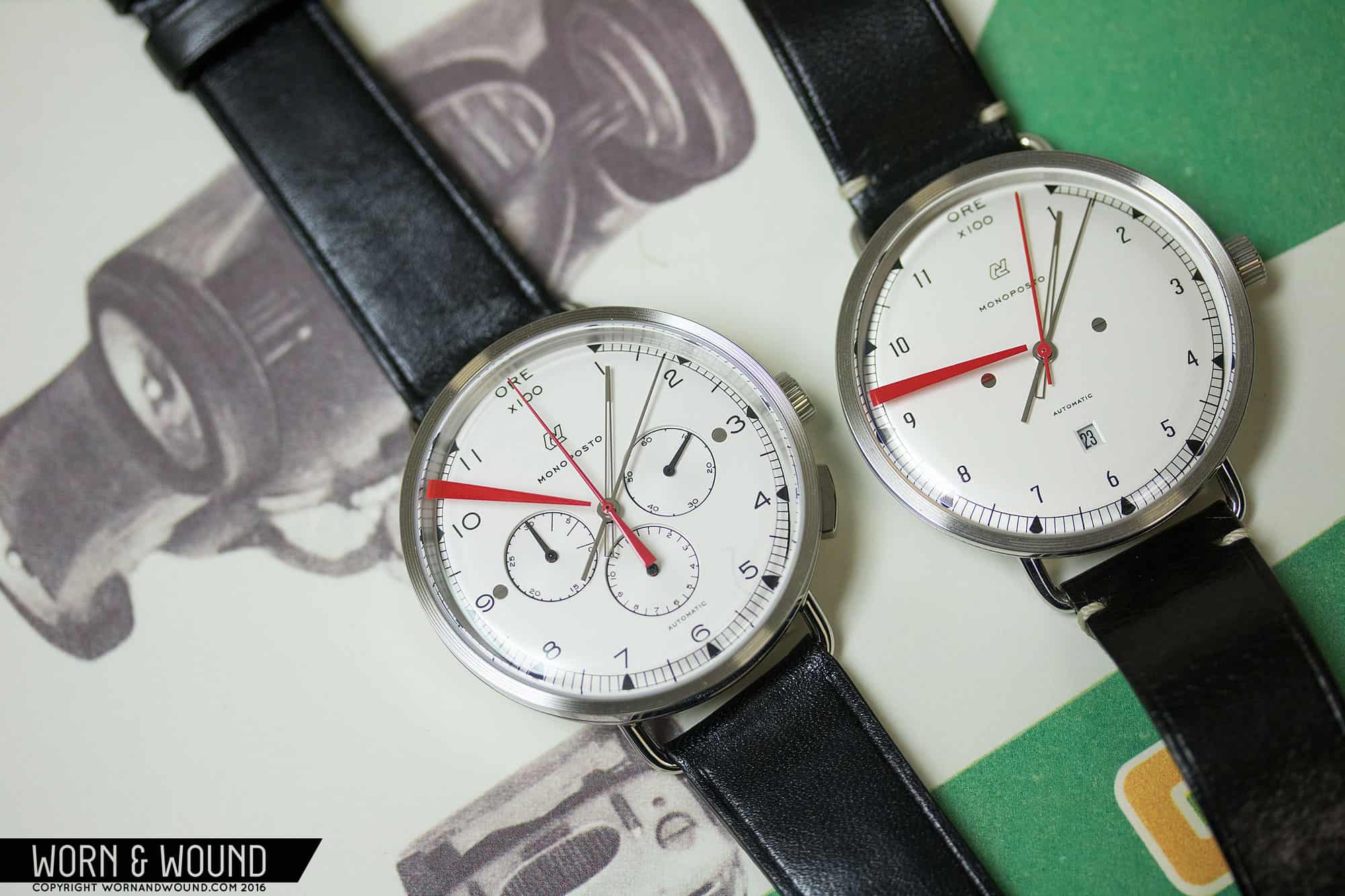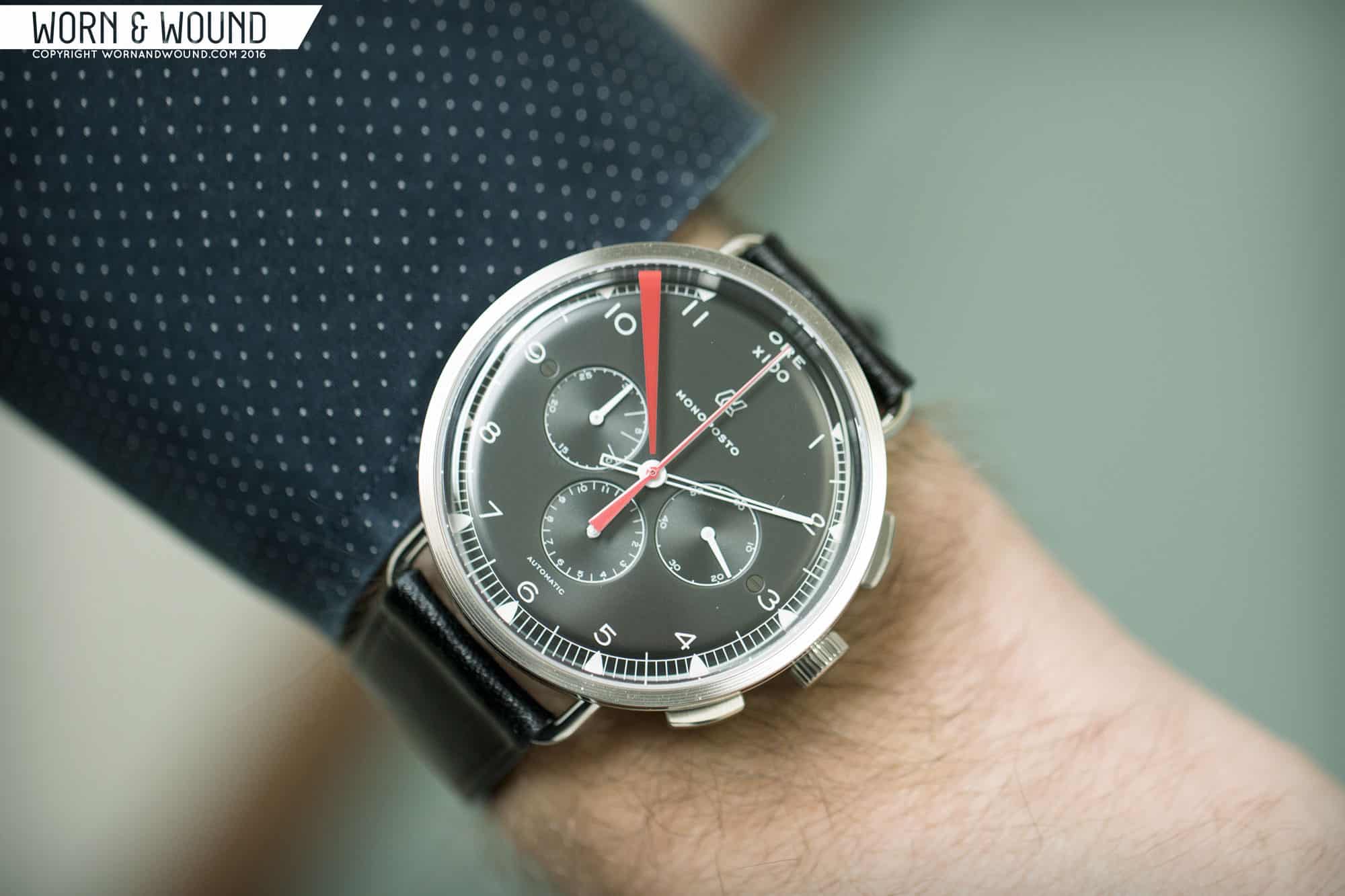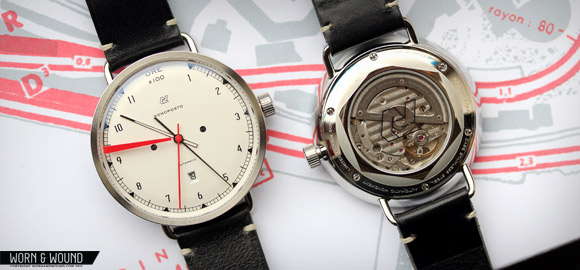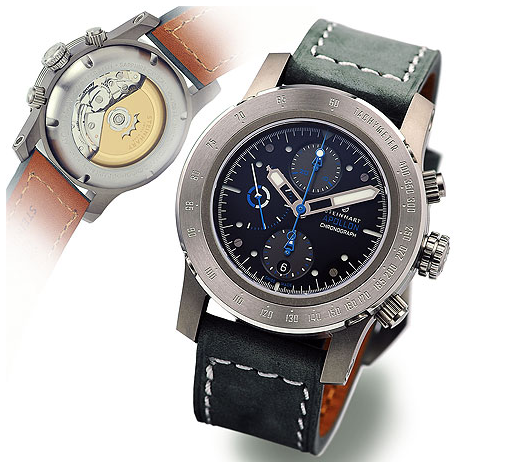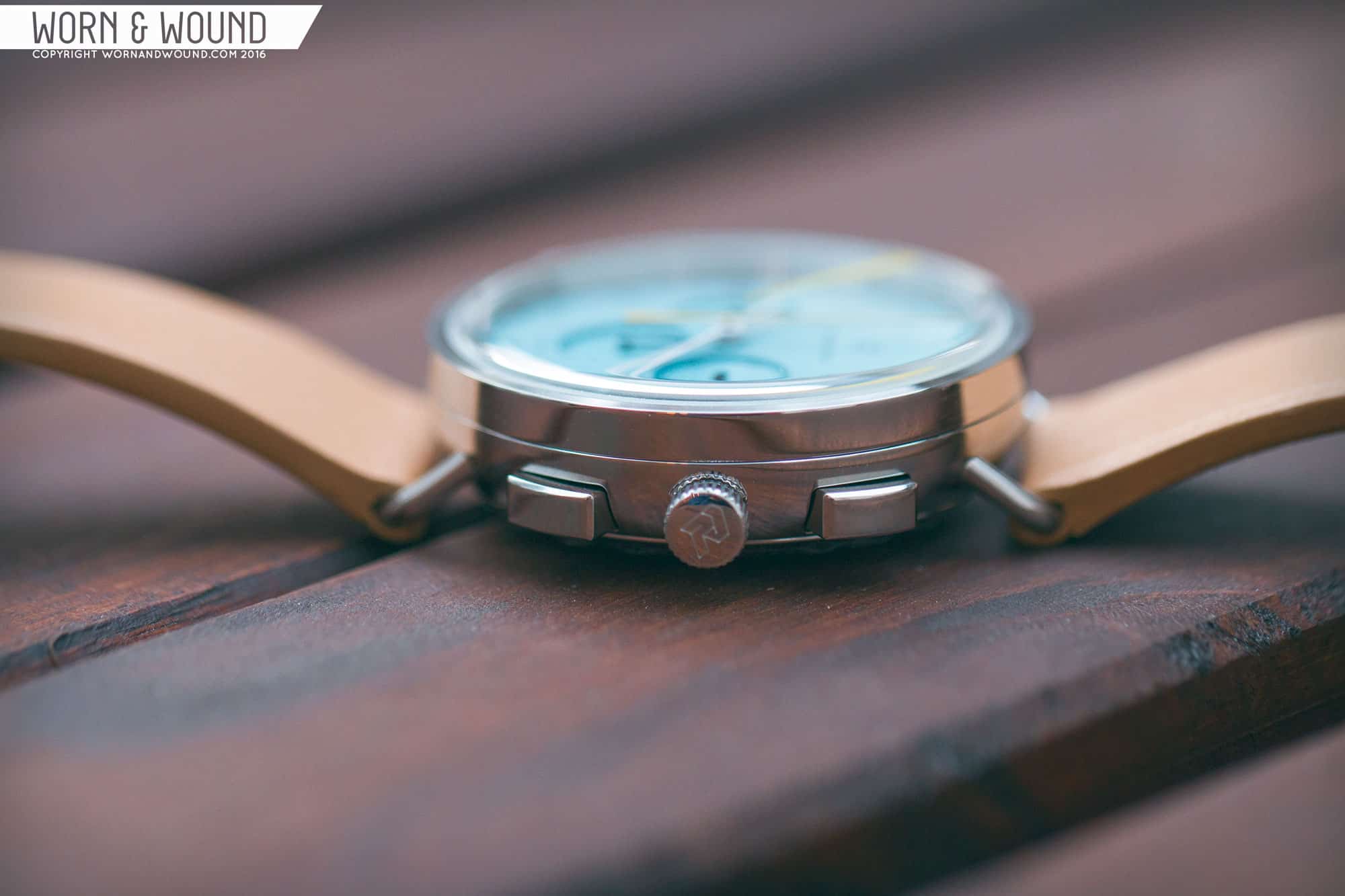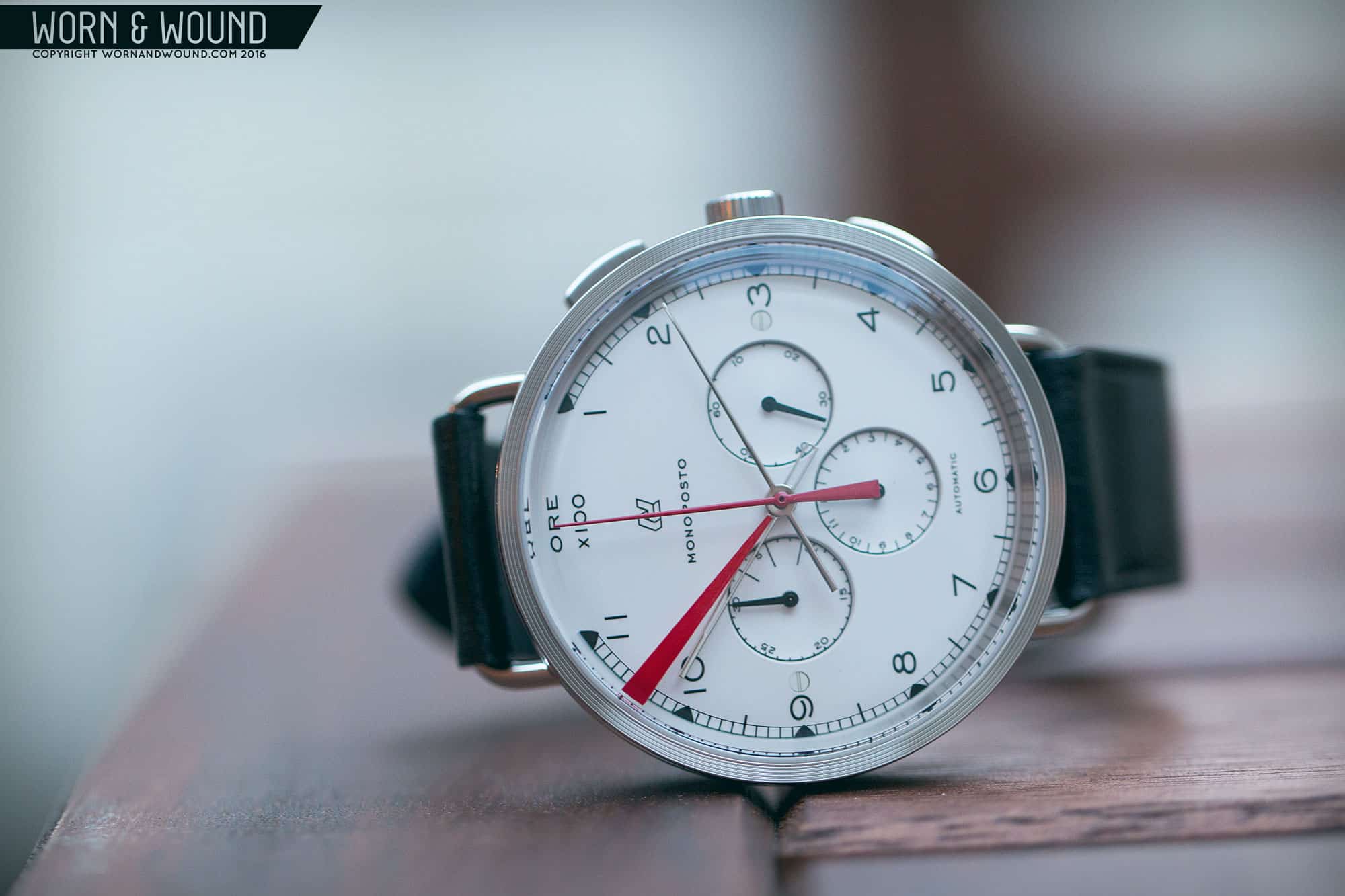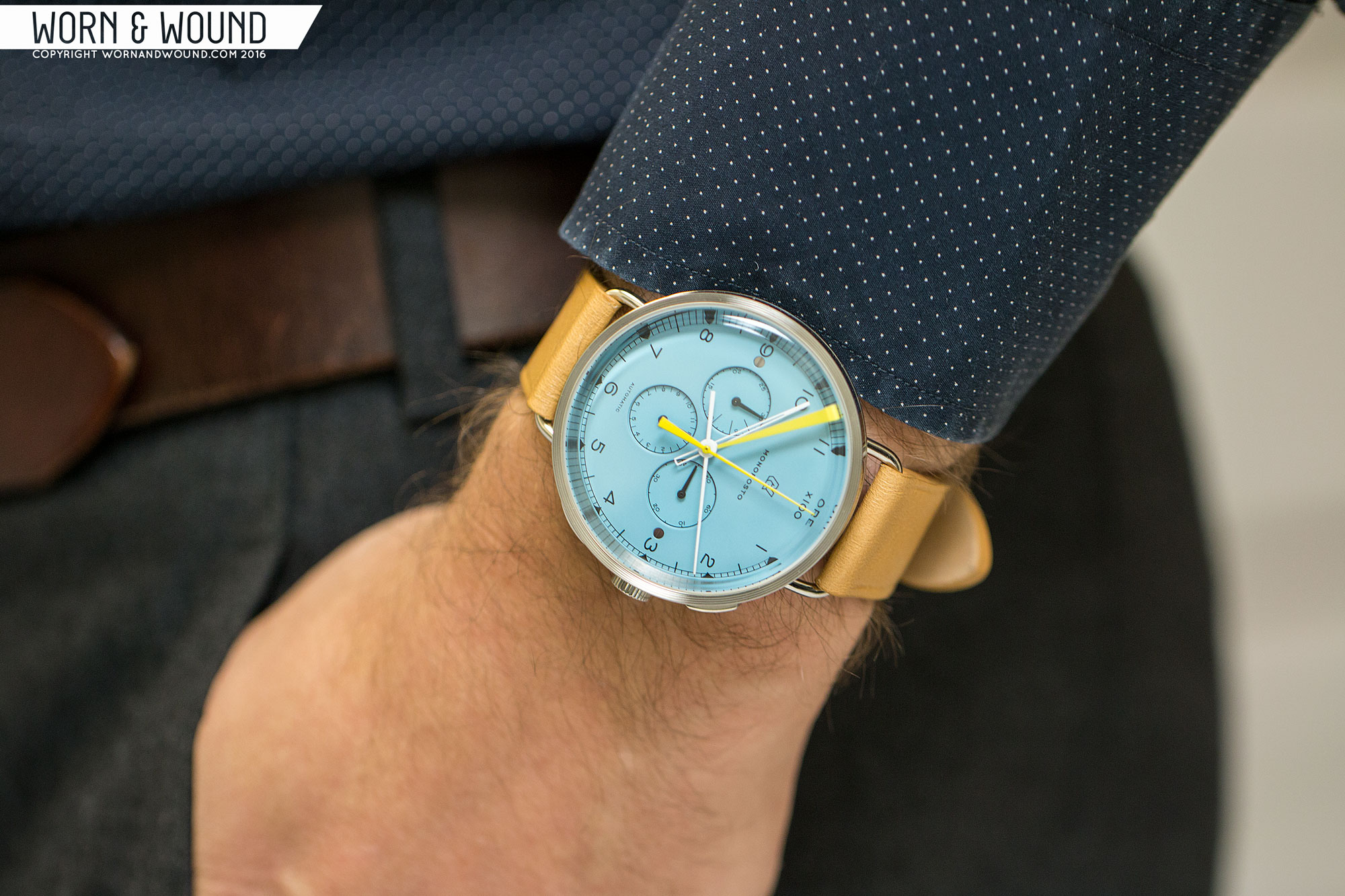Cars and watches have gone together ever since one of the first two car owners uttered the immortal words, “what do you mean, yours is faster?” Timing and racing are inseparable. Yet designing a watch using cues from dash instruments is far, far harder than Bradley Price makes it look. He’s the man behind the automotive-inspired Autodromo and the new Monoposto Chronograph.
Not only does the watch receive the worn&wound award for the most letter Os in a watch name, it’s the younger brother of the original Monoposto and Bradley’s answer to the people who kept saying, “yeah, I like those Autodromo chronographs, but I could never wear a quartz.”
Previous Autodromo chronographs have run the Seiko VK64 mecaquartz movement where the motive power comes from a battery, oscillations from a quartz crystal and chronography from a traditional mechanical train of gears. The combination gets you quartz-tight accuracy and mechanical snap-to-it chronograph action. For some people, it’s the best of both worlds. For others (see above), it’s like getting Banksy to re-paint the Sistine Chapel.









 Featured Videos
Featured Videos




